Written by Rachel on July 17, 2013 |
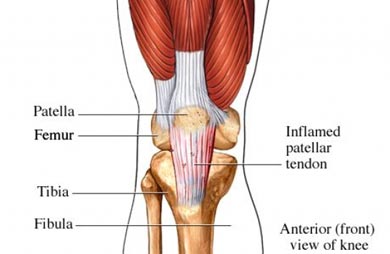
Let’s first get acquainted with the anatomy of the knee. The knee joint is made up of 3 bones essentially. The shin (tibia), the thigh (femur) and the knee cap (patella). The patella is considered a “floating” bone. It interacts with the femur and tibia via quad tendon and connective tissue. Patellar tendonitis specifically is the pain that
Continue Reading »
Written by Rachel on July 10, 2013 |
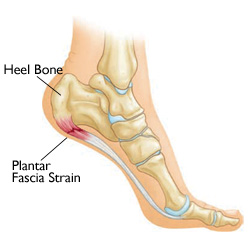
This series of articles will be focusing on the major “itis’” of the body. Over the next few weeks get excited to learn about the pathology, diagnoses and treatment of the major inflammatory conditions of the musculotendinous tissue throughout our body. “itis” translates medically as an inflammatory condition. These conditions are generally caused by chronic repetitive overuse of a structure over a particular time. Acute injuries are not to be ruled out to be causative factors. It is possible to have an acute injury that is hidden “occult” that can turn into a chronic problem over the course of several weeks or months.
Continue Reading »
Written by Chelsea on July 3, 2013 |

Knee pain is one of the most common complaints seen in active individuals’ at all different levels. There are numerous knee-related injuries that can occur directly to specific structures, like ligaments or tendons, in the knee. But what many people are unaware of are the effects of the hip musculature, specifically the glutes (glut max, glut med, glut min), on forces occurring at the knee.
Continue Reading »
Written by Chelsea on June 26, 2013 |
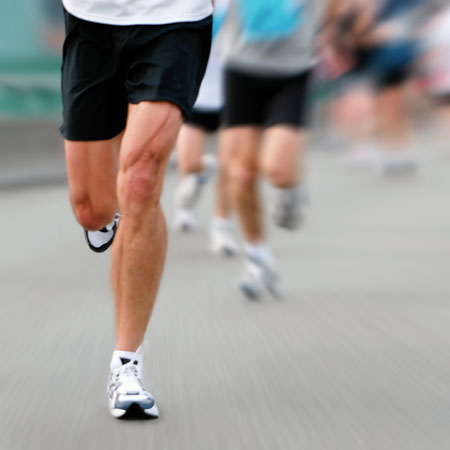
In last week’s article, we discussed some basic guidelines that runners should follow when starting to prepare for their upcoming summer race. Unfortunately, like every sport, there are common injuries runners may experience at any level of training. Here is some information on a few of the most common injuries and information on how to treat and/or prevent them.
Continue Reading »
Written by Chelsea on June 12, 2013 |
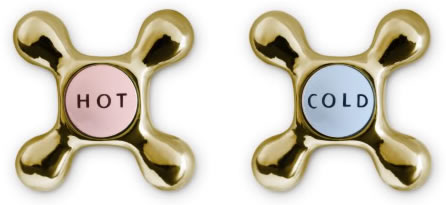
If you have ever experienced an injury, or even the simple aches and pains of daily life, you have probably at some point considered if it would be better to apply a form of ice or heat to the affected area to decrease your pain. The answer to that question is not always perfectly clear cut one way or the other. But there are simple guidelines that you can follow to help direct you towards the best choice for your pain. From a physiological standpoint, ice and heat cause different reactions to occur in your body that can have significant benefits to your affected area. This is a general list of the differences between ice and heat:
Continue Reading »
Written by Laura on June 5, 2013 |
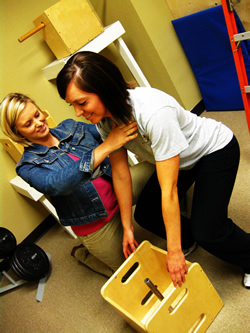
Work Conditioning and Work Hardening are constantly intermixed and/or misunderstood as being the same thing, but they aren’t.
Continue Reading »
Written by Laura on May 30, 2013 |
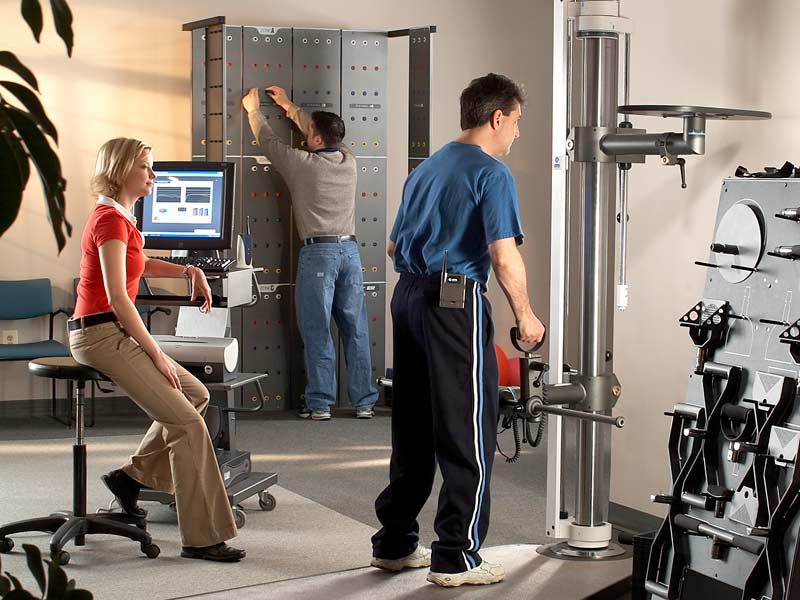
A functional capacity evaluation (FCE) is an objective, functional evaluation of a series of tests administered to help determine current functional and physical status of a patient/client. Not all worker compensation cases need a FCE. Some injuries don’t limit work duties and many times physical and/or occupational therapy provides the healing and assistance to return a patient to work safely. But there are many benefits of a FCE:
Continue Reading »
Written by Laura on May 20, 2013 |
 Industrial rehabilitation is a type of rehabilitation program aimed at helping an injured workers return to work safely and effectively and to help with prevention and reduction of work-related injuries. We must remember that industrial does not automatically mean that it is labor intensive. It includes jobs that are repetitive or that may involve awkward positions or motions. This type of program may include some if not all of the following types of programs/tests: physical and/or occupation therapy (worker compensation focused), Functional Capacity Evaluations (FCE), Work Conditioning, Work Hardening, Ergonomics, Job-Site Analysis, or Post-Offer Employment Test (POET).
Industrial rehabilitation is a type of rehabilitation program aimed at helping an injured workers return to work safely and effectively and to help with prevention and reduction of work-related injuries. We must remember that industrial does not automatically mean that it is labor intensive. It includes jobs that are repetitive or that may involve awkward positions or motions. This type of program may include some if not all of the following types of programs/tests: physical and/or occupation therapy (worker compensation focused), Functional Capacity Evaluations (FCE), Work Conditioning, Work Hardening, Ergonomics, Job-Site Analysis, or Post-Offer Employment Test (POET).
Continue Reading »
Written by Josh on May 8, 2013 |

ProActive Physical Therapy and Sports Medicine prides itself in providing patient care that is focused on returning a patient to his/her previous level of function. It may be a patient who needs to tolerate sitting at a computer work station for 8 hours a day, a grandmother who wants to hold her grandchildren free of debilitating back pain, or the athlete who wants to return to her/his sport ASAP. This article will focus on returning the athlete to his/her previous level of function for a specific sport.
Continue Reading »
Written by Josh on May 2, 2013 |
 Ever have neck and low back pain with pain and/or tingling and numbness down one or both arms or legs? If you have experienced this, you could have spinal stenosis. Spinal stenosis is a broad term that refers to any decrease in the openings in the spinal canal; it can occur along the entire length of the spine. The most common areas for its occurrence are in the cervical spine (neck) and the lumbar spine (low back) regions. Spinal stenosis can occur in the central spinal canal, putting pressure on the spinal cord, causing central stenosis. Lateral stenosis, where the spinal nerves exit the central spinal canal laterally, through openings called spinal foramina, is the most common form of spinal stenosis.
Ever have neck and low back pain with pain and/or tingling and numbness down one or both arms or legs? If you have experienced this, you could have spinal stenosis. Spinal stenosis is a broad term that refers to any decrease in the openings in the spinal canal; it can occur along the entire length of the spine. The most common areas for its occurrence are in the cervical spine (neck) and the lumbar spine (low back) regions. Spinal stenosis can occur in the central spinal canal, putting pressure on the spinal cord, causing central stenosis. Lateral stenosis, where the spinal nerves exit the central spinal canal laterally, through openings called spinal foramina, is the most common form of spinal stenosis.
Continue Reading »









 Industrial rehabilitation is a type of rehabilitation program aimed at helping an injured workers return to work safely and effectively and to help with prevention and reduction of work-related injuries. We must remember that industrial does not automatically mean that it is labor intensive. It includes jobs that are repetitive or that may involve awkward positions or motions. This type of program may include some if not all of the following types of programs/tests: physical and/or occupation therapy (worker compensation focused), Functional Capacity Evaluations (FCE), Work Conditioning, Work Hardening, Ergonomics, Job-Site Analysis, or Post-Offer Employment Test (POET).
Industrial rehabilitation is a type of rehabilitation program aimed at helping an injured workers return to work safely and effectively and to help with prevention and reduction of work-related injuries. We must remember that industrial does not automatically mean that it is labor intensive. It includes jobs that are repetitive or that may involve awkward positions or motions. This type of program may include some if not all of the following types of programs/tests: physical and/or occupation therapy (worker compensation focused), Functional Capacity Evaluations (FCE), Work Conditioning, Work Hardening, Ergonomics, Job-Site Analysis, or Post-Offer Employment Test (POET).
 Ever have neck and low back pain with pain and/or tingling and numbness down one or both arms or legs? If you have experienced this, you could have spinal stenosis. Spinal stenosis is a broad term that refers to any decrease in the openings in the spinal canal; it can occur along the entire length of the spine. The most common areas for its occurrence are in the cervical spine (neck) and the lumbar spine (low back) regions. Spinal stenosis can occur in the central spinal canal, putting pressure on the spinal cord, causing central stenosis. Lateral stenosis, where the spinal nerves exit the central spinal canal laterally, through openings called spinal foramina, is the most common form of spinal stenosis.
Ever have neck and low back pain with pain and/or tingling and numbness down one or both arms or legs? If you have experienced this, you could have spinal stenosis. Spinal stenosis is a broad term that refers to any decrease in the openings in the spinal canal; it can occur along the entire length of the spine. The most common areas for its occurrence are in the cervical spine (neck) and the lumbar spine (low back) regions. Spinal stenosis can occur in the central spinal canal, putting pressure on the spinal cord, causing central stenosis. Lateral stenosis, where the spinal nerves exit the central spinal canal laterally, through openings called spinal foramina, is the most common form of spinal stenosis.